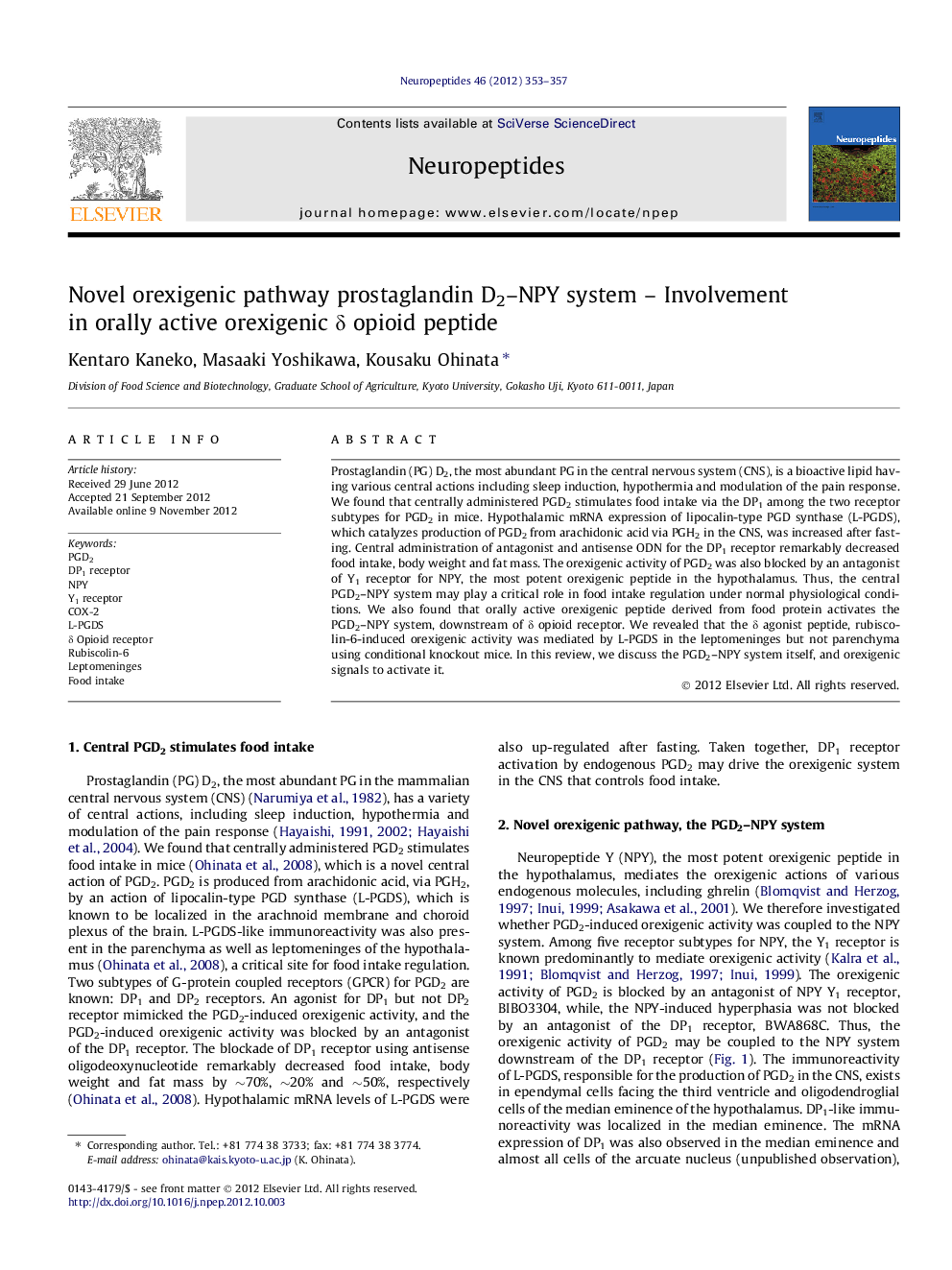| Article ID | Journal | Published Year | Pages | File Type |
|---|---|---|---|---|
| 5904313 | Neuropeptides | 2012 | 5 Pages |
Abstract
Prostaglandin (PG) D2, the most abundant PG in the central nervous system (CNS), is a bioactive lipid having various central actions including sleep induction, hypothermia and modulation of the pain response. We found that centrally administered PGD2 stimulates food intake via the DP1 among the two receptor subtypes for PGD2 in mice. Hypothalamic mRNA expression of lipocalin-type PGD synthase (L-PGDS), which catalyzes production of PGD2 from arachidonic acid via PGH2 in the CNS, was increased after fasting. Central administration of antagonist and antisense ODN for the DP1 receptor remarkably decreased food intake, body weight and fat mass. The orexigenic activity of PGD2 was also blocked by an antagonist of Y1 receptor for NPY, the most potent orexigenic peptide in the hypothalamus. Thus, the central PGD2-NPY system may play a critical role in food intake regulation under normal physiological conditions. We also found that orally active orexigenic peptide derived from food protein activates the PGD2-NPY system, downstream of δ opioid receptor. We revealed that the δ agonist peptide, rubiscolin-6-induced orexigenic activity was mediated by L-PGDS in the leptomeninges but not parenchyma using conditional knockout mice. In this review, we discuss the PGD2-NPY system itself, and orexigenic signals to activate it.
Related Topics
Life Sciences
Biochemistry, Genetics and Molecular Biology
Endocrinology
Authors
Kentaro Kaneko, Masaaki Yoshikawa, Kousaku Ohinata,
